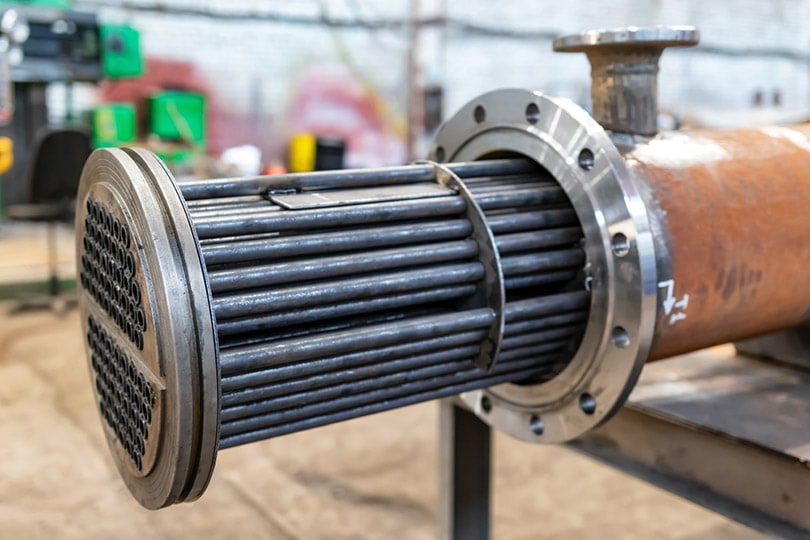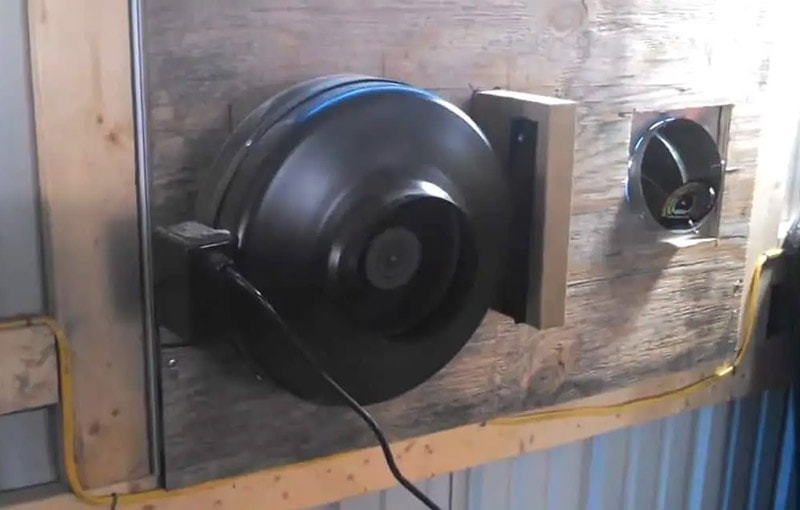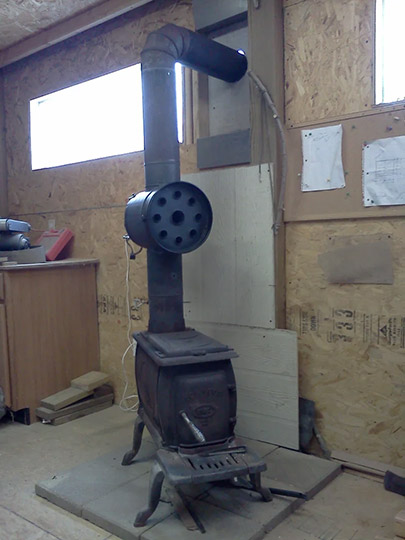4 DIY Heat Exchanger Plans You Can Make Today (With Pictures)
-
Kristin Hitchcock
- Last updated:

Heat exchangers are used for heating and cooling and can be used for ventilation in a home. Some homeowners use basic heat exchangers to heat their garages. However, DIY plans for heat exchangers are few and far between. They are not ordinary DIY projects, after all. In our search for the best DIY heat exchanger plans, we found four excellent projects you can try today. We also included a few sections at the end where we answer frequently asked questions.

The 4 DIY Heat Exchanger Plans
1. Practical DIY Survival Heat Exchanger

| Materials: | Gallon drum, steel pipes, aluminum flex pipes, exhaust fan |
| Difficulty: | Medium |
This DIY plan is made with basic materials you can find at most hardware stores. The only material that you’ll have to search for online or at a big-box retailer is an exhaust fan. This plan involves a lot of welding and leaves you with a heat exchanger for heating a garage. Of course, you could likely use it for other purposes as well. You can also add a drip-fed waste oil system to the outdoor stove part of the heat exchanger. It will increase the amount of heat produced, and it is explained thoroughly in the plan.
While it is a DIY project, that doesn’t necessarily mean it is inexpensive. If you have to purchase all the pipes and drums, you’ll probably spend quite a bit of money.
2. DIY Woodstove Heat Exchanger

| Tools: | MIG Welder, Bandsaw, Chopsaw, Bench Grinder, Angle Grinder, Rotary Tool, Tin Snips, Drill Bits |
| Difficulty: | Medium |
This heat exchanger is designed to work on a woodstove and efficiently transfers heat into your home. There are many steps in this DIY plan, and they all have to be pretty exact. Therefore, we only recommend it for those with construction experience. You’ll also need quite a few tools that the average person doesn’t have just sitting around.
If you haven’t welded before, you may have trouble with this project. It is easily one of the more complicated plans we’ve seen, largely because of all the steps. However, the steps aren’t terribly complicated—there are just so many of them!
3. DIY Heat Exchangers on a Solar Heater
| Materials: | Wrench, PEX Expansion Tool |
| Difficulty: | Medium |
This DIY plan involves adding heat exchangers onto a solar heater, which is often used to heat a garage or other building without a proper heating system. The plan is designed specifically for this purpose and isn’t very versatile.
However, if you’re interested in heating your garage, you could use this method to build a solar heater and add heat exchangers. It does a pretty good job of heating your home in warmer areas, which may make it a good option for garages and similar outbuildings.
Keep in mind that this plan also involves quite a bit of welding. It is also in a video format, which may make it a bit harder to follow (or easier, depending on your preferences).
4. DIY Grey Water Heat Exchanger

| Materials: | 5-gallon bucket gray water unit |
| Difficulty: | Hard |
While this may not sound luxurious, this plan helps you retrieve and use the heat found in greywater. For instance, this unit utilizes the heat produced by shower water and similar hot water. Therefore, instead of simply going down the drain, you can use the water to heat a room.
However, the plan is difficult to complete. You must redirect your pipes to ensure you can capture the heated water into a barrel. Then, you’ll build the heat exchanger inside the barrel. Ultimately, it is a complicated process that is not for beginners.
Can You Cool with a Heat Exchanger?
Heat exchangers aren’t typically used to cool a room. Heat exchangers work by taking heat from something really hot (like a fire or hot water) and transferring it to a different area. In this way, you can use a fire to heat your home, for instance. Or, you can reuse the hot water wasted after your shower.
However, while you could technically cool in this manner, it would be challenging. You need something cool that transfers the cool air into the space you want to cool down. You may be able to use ice to cool down a room a little, but it is not practical (as you’d have to fill it up with ice continuously).
You can craft water chillers, which are a bit more common. However, they have a different function than a heat exchanger.
Which Heat Exchanger Design is the Most Efficient?
It’s challenging to determine which heat exchanger is the most effective. It largely depends on what you’re trying to accomplish since various heat exchangers work differently. Some are designed to heat pool water, while others heat garages.
However, a plate exchanger is the most efficient design. It allows for the most efficient flow from both sides and has a wide surface area.
How Much Does It Cost to Make a Heat Exchanger?
To replace a heat exchanger with a commercial option, you’ll pay around $2,000. However, making one is often cheaper, and you’ll spend around $300 on supplies. Of course, it depends on the exact metrics and what materials you already have on hand.
If you can recycle the materials you have, you’ll spend less money.

Conclusion
Heat exchangers are necessary for the production of heat. Without them, heating our homes would be difficult. However, you can use heat exchangers with various heat sources, ranging from the sun to hot water to fires.
We hope the plans we discussed have provided inspiration. Because everyone’s situation is different, some of the heat exchangers may not work in your home. Usually, you’ll have to adapt a DIY plan for your home, based on the space you have available.
See Also:
Featured Image Credit: shinobi, Shutterstock
Contents
